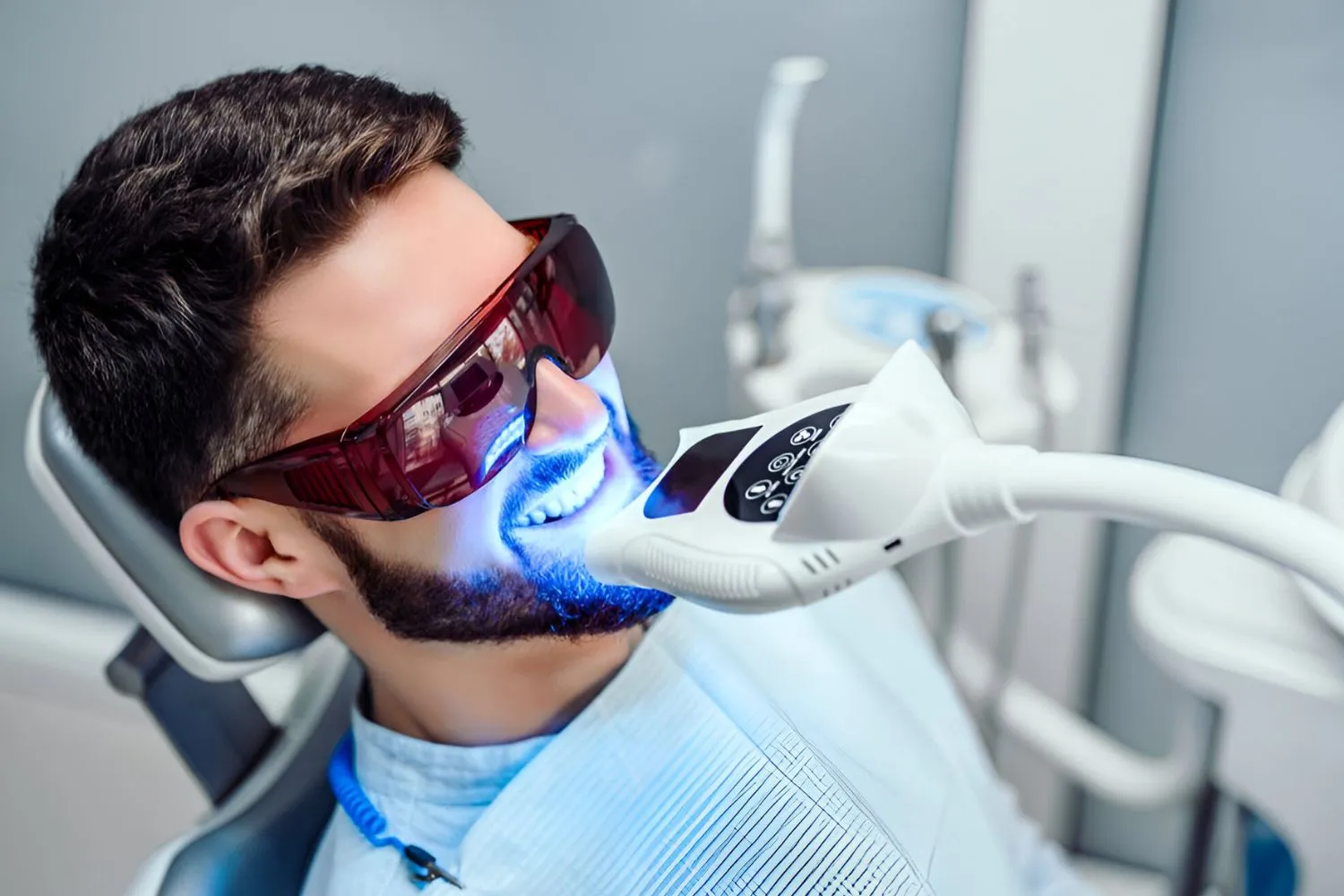Understanding Teeth Whitening Blue Light
Teeth whitening has become a hugely popular cosmetic procedure, with many individuals seeking brighter, more aesthetically pleasing smiles. Among the various methods available, blue light teeth whitening has gained significant traction. This technique typically involves applying a bleaching agent, usually hydrogen peroxide or carbamide peroxide, to the teeth, followed by exposure to a blue light. The blue light is believed to accelerate the chemical reaction of the bleaching agent, thereby enhancing the whitening effect. However, it’s crucial to understand the underlying mechanism and potential drawbacks before undergoing this procedure, ensuring that you’re well-informed about the potential risks and benefits associated with it. This understanding helps you make informed decisions and maintain optimal oral health.
How Does Blue Light Teeth Whitening Work
The process begins with the application of a whitening agent, often containing a peroxide-based compound, to the surface of the teeth. This agent penetrates the enamel and dentin, the layers beneath the enamel, to break down stains and discoloration. The blue light, emitted by a specialized lamp, then acts as a catalyst. It emits photons that are absorbed by the whitening agent, thereby speeding up the oxidation process. This accelerated reaction results in quicker and often more dramatic whitening results compared to using the whitening agent alone. The intensity and duration of the light exposure, along with the concentration of the whitening agent, influence the overall effectiveness of the treatment. Understanding how this works helps in evaluating the potential side effects and benefits.
The Science Behind Blue Light Whitening
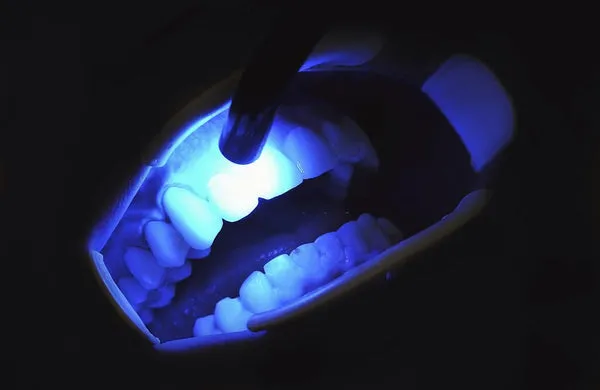
At the molecular level, the blue light primarily serves to excite the molecules of the whitening agent, increasing their activity. The light energy is absorbed by the peroxide molecules, causing them to break down into smaller, more reactive components. These components, in turn, interact with the stain molecules embedded within the tooth enamel. The process involves the breakdown of these stain molecules through oxidation, effectively lightening their color and making the teeth appear whiter. The exact wavelengths of blue light are chosen to maximize this interaction without causing excessive heat, which could potentially damage the tooth structure. However, the effectiveness can vary, influenced by factors like the type of stains, enamel thickness, and the concentration of the whitening agent. The science is intricate, requiring a delicate balance to achieve desired results while minimizing potential side effects.
Top 5 Side Effects of Blue Light Teeth Whitening
While blue light teeth whitening can deliver impressive results, it is not without potential side effects. It is essential to be aware of these risks to make informed decisions about your oral health. The severity of these side effects can vary from person to person, depending on factors like individual sensitivity, the concentration of the whitening agent, and the duration of light exposure. Being aware of the potential adverse effects helps you prepare and mitigate any discomfort experienced during or after the procedure. Always consult with a dental professional to evaluate your suitability for this treatment and address any concerns you may have.
Teeth Sensitivity Following Treatment
One of the most commonly reported side effects is increased tooth sensitivity. This sensitivity occurs because the whitening agent can temporarily open the pores in the enamel, exposing the underlying dentin, which contains nerve endings. This heightened sensitivity can manifest as discomfort when consuming hot or cold foods and beverages, and even during air exposure. The level of sensitivity typically peaks a few days after the procedure and gradually subsides as the enamel remineralizes. To manage this sensitivity, dentists often recommend using toothpaste designed for sensitive teeth, which contains ingredients like potassium nitrate to soothe the nerves. Avoiding extremely hot or cold foods for a few days can also help minimize discomfort. Proper care and attention help alleviate this issue.
Gum Irritation and Inflammation
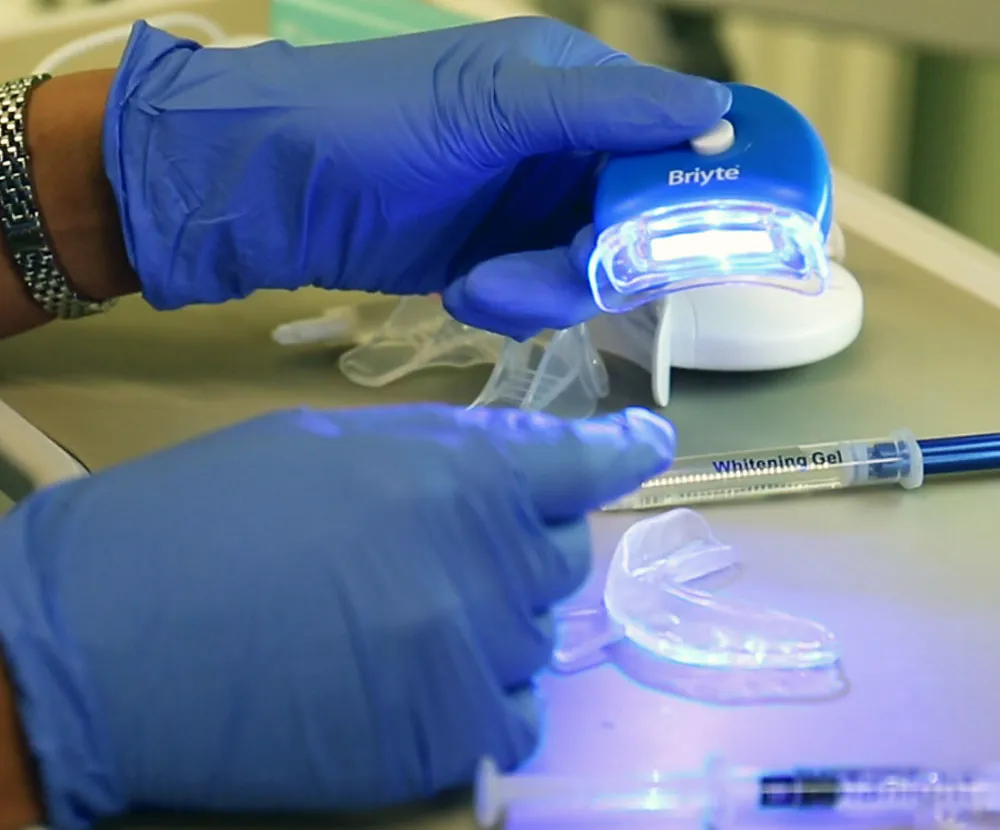
Gum irritation and inflammation, another potential side effect, can arise if the whitening agent comes into contact with the soft tissues of the gums. This can happen during the application of the agent or if the protective barriers are not properly in place. Symptoms may include redness, swelling, and soreness of the gums. In some cases, the gums can become sensitive to touch. To mitigate this, dental professionals take precautions such as applying a protective barrier over the gums before starting the whitening treatment. Proper oral hygiene, including gentle brushing and flossing, is essential during the healing phase. Using a salt water rinse can also help soothe irritated gums and promote faster recovery. If the irritation persists or worsens, it is advisable to consult a dentist.
Enamel Damage Risks
Overuse or misuse of teeth whitening products can potentially lead to enamel damage. While the enamel is a robust protective layer, it can be compromised if exposed to high concentrations of bleaching agents for prolonged periods. This can result in the erosion of the enamel, making the teeth more susceptible to decay and sensitivity. The risk is higher when using at-home whitening kits without professional guidance or when exceeding the recommended treatment durations. To minimize the risk, adhere to the instructions provided by your dentist or the product manufacturer. Ensure you are using products with the correct concentration of whitening agent and avoid over-whitening to preserve the health and integrity of your enamel. Regular dental check-ups can also help monitor the condition of your enamel.
Potential for Uneven Whitening
Uneven whitening is a possible outcome, particularly if the teeth have varying degrees of staining or if the whitening agent does not distribute uniformly across the tooth surfaces. This can result in a patchy appearance, with some areas appearing whiter than others. This unevenness is often noticeable when the teeth have existing fillings, crowns, or veneers, as these restorations will not whiten in response to the bleaching agent. The initial condition of your teeth, including the presence of intrinsic stains, can also affect the outcome. To minimize the chances of uneven whitening, a dentist may recommend pre-treatment steps, such as professional cleaning, to remove surface stains. They can also apply the whitening agent more precisely and monitor the process to ensure uniform coverage. Adjustments can be made during the treatment to address any unevenness.
Allergic Reactions and Sensitivities
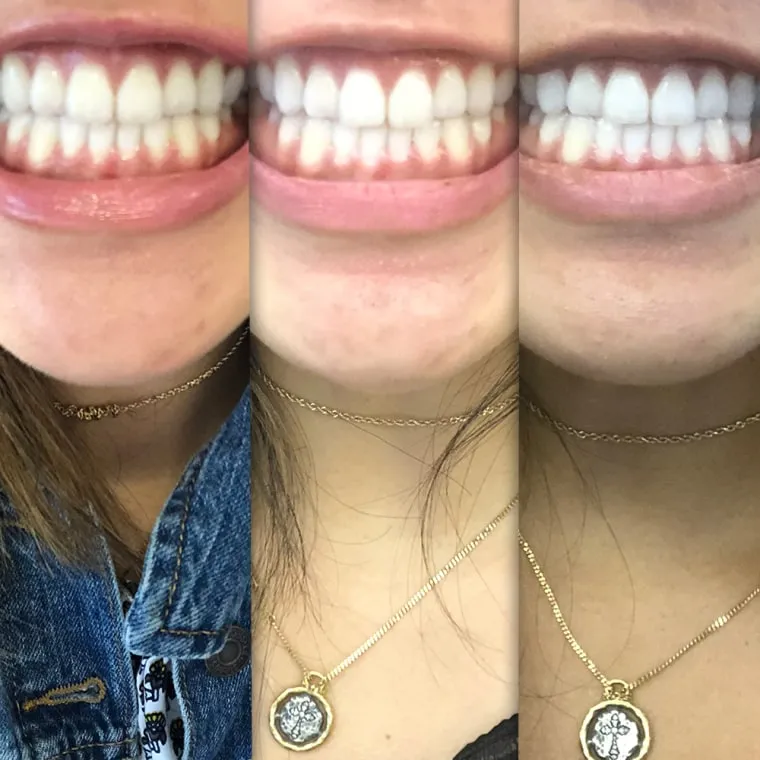
Although less common, allergic reactions or sensitivities to the ingredients in the whitening agent are possible. Some individuals may experience symptoms such as itching, swelling, or rashes in the mouth or surrounding areas. These reactions may be triggered by the peroxide-based bleaching agents or other additives in the products. If you suspect you are having an allergic reaction, it is crucial to stop the treatment immediately and consult with your dentist or a healthcare professional. They can evaluate your symptoms and determine the appropriate course of action, which may include the use of antihistamines or other medications to alleviate the reaction. Inform your dentist about any known allergies before undergoing teeth whitening to minimize potential risks.
How to Minimize Side Effects and Risks
Several measures can be taken to minimize the potential side effects and risks associated with blue light teeth whitening. A proactive approach, involving careful planning and adherence to professional guidance, can help maximize the benefits while reducing the likelihood of adverse outcomes. By prioritizing preventive measures and following expert advice, you can improve your chances of achieving a brighter smile with minimal discomfort or long-term health concerns. Being well-informed and proactive contributes to a more positive and satisfying whitening experience, ensuring optimal oral health alongside aesthetic improvements.
Consult Your Dentist First
Before undergoing any teeth whitening procedure, it’s crucial to consult with your dentist. They can assess your oral health, identify any pre-existing conditions, and determine if teeth whitening is appropriate for you. A dentist can evaluate your teeth for cavities, gum disease, and other issues that need to be addressed before whitening. They can also advise you on the best whitening method based on your individual needs and the condition of your teeth. This consultation allows you to discuss your expectations, understand the potential risks, and receive personalized recommendations. They can also provide you with professional-grade treatments or guide you on safe at-home options.
Choose Reputable Products and Providers
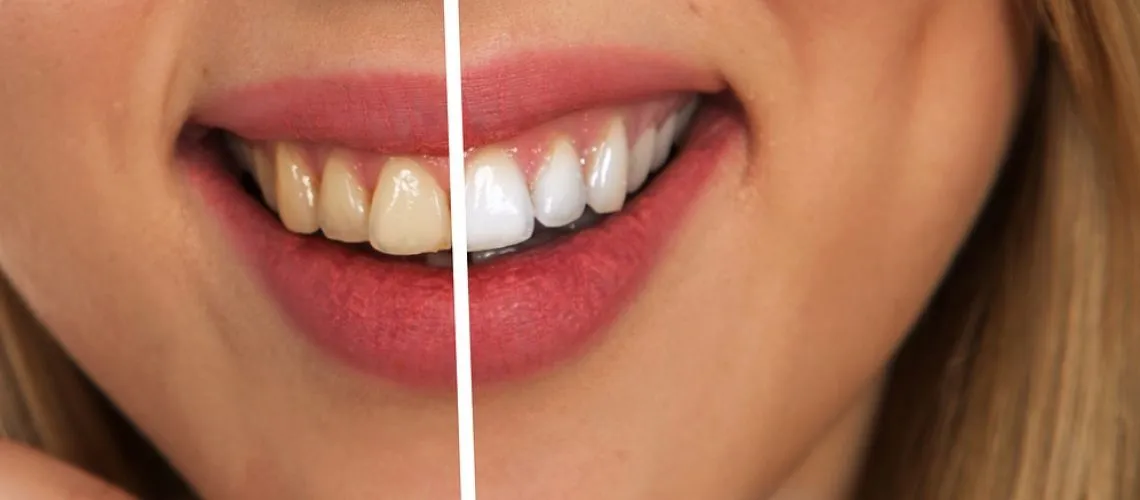
The quality and safety of teeth whitening products and services can vary significantly. Opt for reputable providers and products that meet established standards. Ensure that the dental professional performing the procedure is licensed and experienced in teeth whitening techniques. For at-home kits, choose products approved by dental organizations or regulatory bodies. Look for reviews and testimonials from other users to gauge the provider’s or product’s effectiveness and safety record. Always verify the concentration of the whitening agent in the product and follow the manufacturer’s instructions carefully. Be cautious of extremely low-priced offers, as they may indicate substandard products or inexperienced providers. Prioritize your oral health and safety by making informed choices about the products and services you select.
Follow Post-Whitening Care Instructions
After undergoing a teeth whitening procedure, diligently follow the post-whitening care instructions provided by your dentist or the product manufacturer. These instructions typically include guidelines on avoiding certain foods and drinks that can stain your teeth, such as coffee, tea, red wine, and dark-colored foods. You may also be advised to use a toothpaste designed for sensitive teeth to minimize discomfort. Maintaining good oral hygiene is crucial, including brushing your teeth twice a day and flossing regularly to remove plaque and prevent staining. Regular dental check-ups and cleanings will help maintain your bright smile. Following these guidelines helps to maintain your results for a longer period and minimizes the risk of side effects.
Alternative Teeth Whitening Methods
If blue light teeth whitening is not suitable for you, or if you prefer to explore alternative options, several other teeth whitening methods are available. These alternatives offer different approaches to achieving a brighter smile, each with its own set of advantages and considerations. These options can range from professional treatments performed by your dentist to at-home methods. The suitability of each method can vary based on your individual needs, the extent of discoloration, and your preferences. Consulting your dentist is the best way to determine which method is most appropriate for your specific situation, taking into account your oral health and aesthetic goals. This personalized advice ensures that you select the safest and most effective approach.
Professional Teeth Whitening Options
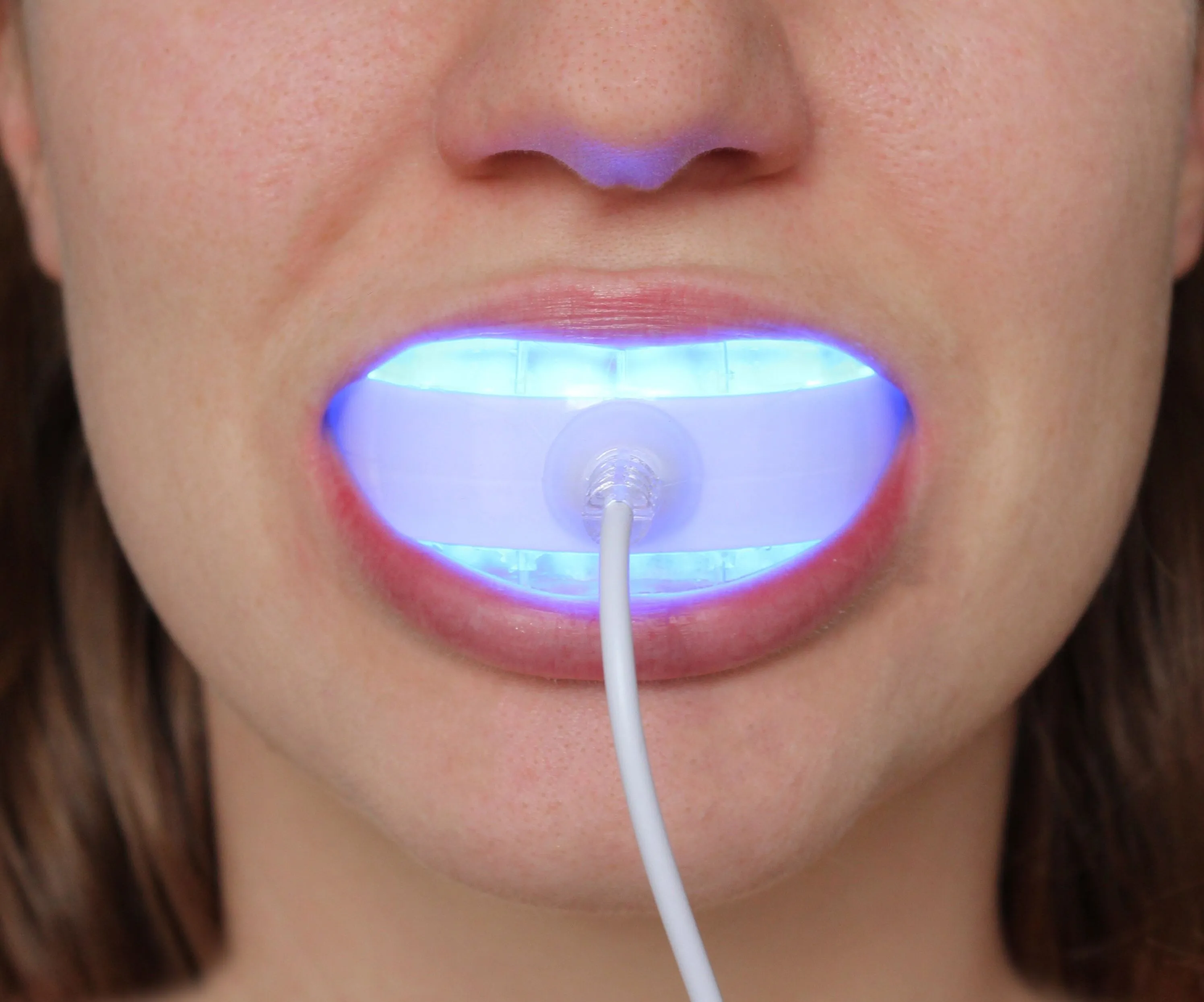
Professional teeth whitening, performed by a dentist, offers a controlled environment and often provides the most dramatic results. The dentist can use stronger concentrations of whitening agents compared to at-home kits, typically under controlled conditions. This is done to ensure effectiveness and monitor any side effects. Professional whitening treatments often involve isolating the teeth from the gums with protective barriers and using a high-intensity light to accelerate the whitening process. Your dentist can also address any underlying dental issues before the treatment. This helps in achieving a uniform and long-lasting result. Although more expensive than at-home methods, professional whitening offers the advantage of expert supervision and can be tailored to meet individual needs.
At-Home Whitening Kits
At-home whitening kits provide a convenient and cost-effective alternative for teeth whitening. These kits typically include whitening trays, gels, and instructions for use. The dentist often customizes the trays to fit your teeth for optimal contact with the whitening gel. The gels usually contain a lower concentration of peroxide compared to professional treatments, which reduces the risk of side effects. These kits allow you to whiten your teeth at your own pace. It’s important to follow the instructions carefully to ensure effectiveness and minimize potential risks. Consulting your dentist before using an at-home kit is advisable. They can guide you in selecting a safe and effective product and monitor your progress. This ensures that you achieve the desired results safely.
Natural Teeth Whitening Approaches
For those seeking natural teeth whitening solutions, several options are available. These methods often involve using ingredients with mild abrasive or stain-removing properties. One popular approach is brushing with baking soda, which helps to gently scrub away surface stains. Another option involves using activated charcoal, which is believed to absorb stains and impurities. Some people also use fruit peels, such as orange or banana peels, to rub on their teeth, claiming that the compounds in the peels can help brighten teeth. While these natural methods may offer some benefits, their effectiveness can vary. It is important to note that they may not produce as dramatic results as professional treatments or strong chemical-based whiteners. Also, excessive use of abrasive substances can potentially damage the enamel. Consulting your dentist is crucial to determine the safety and effectiveness of any natural whitening method for your teeth.
The Importance of Oral Health After Whitening
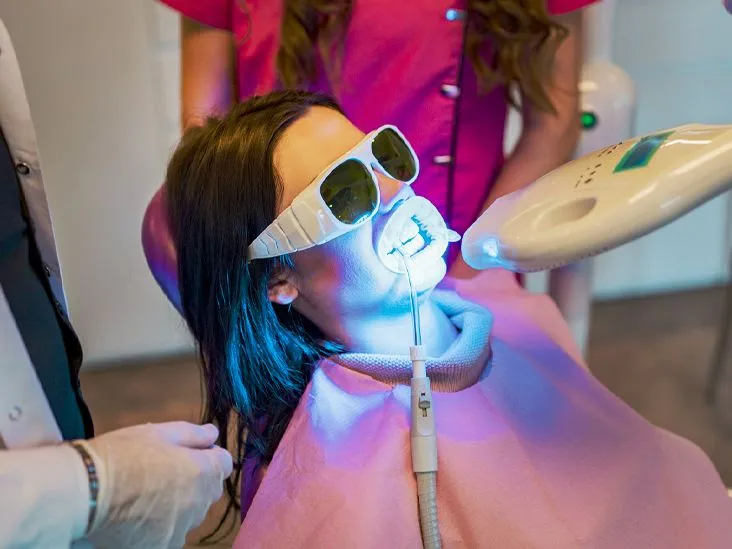
Maintaining good oral health is crucial, both before and after teeth whitening, to ensure the longevity of the results and to preserve the overall health of your teeth and gums. Regular dental check-ups and cleanings are essential. They allow your dentist to monitor your oral health, detect any potential issues early on, and provide professional cleaning to remove plaque and tartar. Proper brushing and flossing habits are vital for preventing staining, decay, and gum disease. Consider using a whitening toothpaste to help maintain your bright smile. Limiting your intake of stain-causing foods and beverages is also essential. By prioritizing oral health and following your dentist’s recommendations, you can enjoy a healthy and radiant smile for years to come. Consistent care contributes significantly to the long-term success of your teeth whitening efforts.
In conclusion, while blue light teeth whitening can be an effective method for achieving a brighter smile, it is essential to be aware of the potential side effects and risks. Understanding these factors, consulting your dentist, and following post-whitening care instructions are critical steps to ensuring both the safety and the effectiveness of the procedure. By making informed choices and prioritizing oral health, you can achieve a beautiful, confident smile while minimizing any potential risks. Remember to always consult with a dental professional to determine the most suitable whitening method for your individual needs and to maintain optimal oral health.
